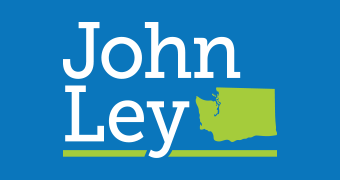John Ley Speaks Out On Troubling Bi-State Bridge Project
March 2, 2023 (Lars Larson show posting)
The following was written by long time friend of the show, and Clark County resident John Ley in an email to Oregon Senator Chris Gorsek..
Senator Gorsek:
I read with interest, your column in the Thursday issue of the Portland Tribune. I know you are extremely busy juggling a host of important issues in the Oregon Legislature. (I have copied Rep. Pham who sits on the Bi-State Bridge Committee of 16 legislators providing oversight).
In response to your column, I would like to point out several facts and some perspective regarding the state of the Interstate Bridge, and the “solution” being proposed (the IBR).
- #1 — what is the ONE PROBLEM the people want resolved? They want to save TIME and REDUCE TRAFFIC CONGESTION. (Here & here). Yet the current proposed “solution” offers neither.
The IBR admits that by 2045, morning commute times from Salmon Creek (Vancouver) to the Fremont Bridge will DOUBLE. It takes 29 minutes today and will take 60 minutes in 2045. (here). Furthermore, HALF of rush hour vehicles will be stuck going ZERO to 20 MPH according to the IBR, up from 28 percent today. Clearly, they are not fixing the one problem people want resolved, not to mention being bad for the environment.
- #2 — the current two structures that make up the I-5 Interstate Bridge are not likely to fall down in our lifetimes. The real “experts” at both OSU and the M9 project in Seattle, say there is a 10-14 percent chance of Cascadia Sub“the big one” happening during the next 50 years. That means there is an 86-90 percent chance it will NOT rupture in the next 50 years. The Cascadia Subduction Zone (CSZ) rupture is not the immediate problem or “risk”. (Read here).
The Oregon plan for dealing with a CSZ seismic event has the Interstate 5 structures in the Portland metro area LAST on their priority list for repair/replacement. Oregon has a $5.1 billion need for seismic upgrades in the last report (here).
- #3 — the $7.5 billion cost is exorbitant. You should be able to build a replacement bridge for $1 billion or less. (Here). Oregon is currently working with Washington to replace the Hood River bridge over the Columbia for $400-$500 million. The (new) Tacoma Narrows Bridge was built for $786 million in 2007 It provides 188 feet of clearance for marine traffic and is over 50 percent longer. In the failed CRC, the cost of the bridge was $792 million, less than one quarter the $3.5 billion price tag of the project.
- #4 — Oregon has roughly a $2 billion funding shortfall for transportation projects in the metro area ($1 billion for the Rose Quarter, $400 million for the Abernethy Bridge & $500 million for the Wilsonville Boone Bridge), all before you attempt to tee up another $1 billion for the IBR.
- #5 — At the moment and in the foreseeable future, there is no demand for cross river mass transit. If there were legitimate demand, TriMet would be running buses across the river in addition to Clark County’s C-Tran. But C-Tran ridership over the river has been falling for nearly a decade (here). Presently, their Route #105 “I-5 Express” bus line had an average of 431 average daily boardings in 2022. Since one person boards twice a day, that is only 216 people being served. TriMet has a history of failed promises regarding transit ridership (here).
Additionally, the Yellow Line MAX trains can only carry about 1,000 people an hour (4 trains at 15-minute headways) and travels an average of 14 miles per hour. Nobody wants to travel that slow. They can’t put more cars on a train, due to the short length of a downtown Portland city block. They can’t run more trains because the Steel Bridge (all MAX trains use it) presently has one train every 90 seconds during rush hour.
TriMet has stated they don’t believe their low transit ridership will recover to pre-pandemic levels until 2027. C-Tran’s 5-year development plan indicates ridership will only return to about 75 percent of pre-pandemic levels by 2027. Overall, C-Tran ridership peaked in 1999 and TriMet ridership peaked in 2012. Both transit systems fail to attract new riders in spite of a growing regional population.
Transportation architect Kevin Peterson scrutinized all the CRC traffic projection data. He concluded those (now 15 year old) data indicated the need for 5 lanes in each direction on I-5 by 2030, and 7 lanes by 2045. There are presently 300,000 vehicles using the two Columbia River bridges today. That is projected to grow to 550,000 vehicles by 2060.
I would hope you can answer the following question related to the IBR, it’s plans for TOLLS, and the inclusion of light rail. “Where is the value for taxpayers?”
I would be most happy to answer any questions you have or provide additional information on any of the topics addressed in this letter.
Sincerely,
John Ley
Following publication on Lars website, he invited me on his show to discuss the issue. Here is our conversation. Thank you, Lars!
Lars L


